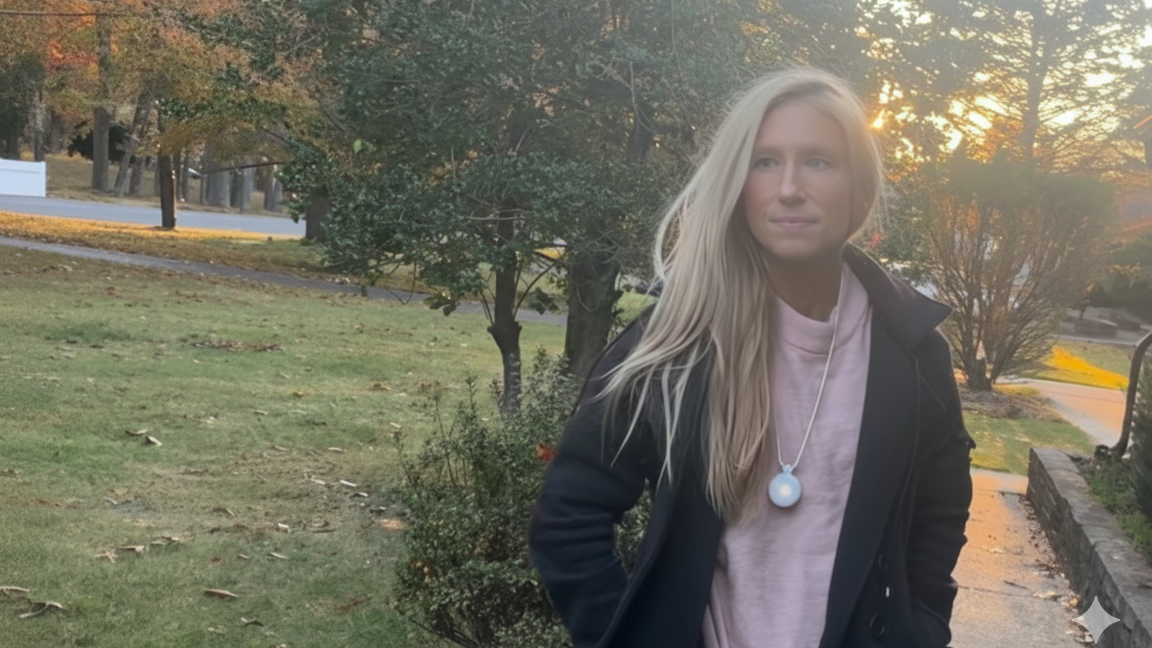Binaural Beats are your secret weapon to the perfect daytime nap – here's why
Trending on TikTok, binaural beats are said to help you nap during the day and sleep better at night. But do they really work?
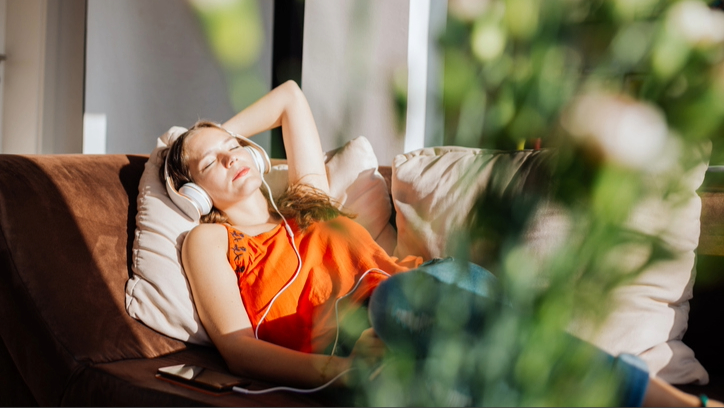
Apparently a great tool for napping well during the day and sleeping better at night, binaural beats are having a moment on TikTok. And it's not just video content creators shouting about their sleep-inducing benefits, neuroscientists and researchers are too.
With thousands of posts under the hashtag #binauralbeats and over 2.1 million views on one video by content creator @hey.im.rach about how binaural beats can help you take the perfect nap, we want to find out more about this phenomenon and whether it really works as a sleep aid.
Alongside their sleep benefits, binaural beats supposedly help reduce stress and anxiety. Here we'll delve into the science behind the way these sound frequencies work to help you decide whether they are beneficial for you and your sleep needs.
What are binaural beats?
Binaural beats are an auditory illusion that occurs when two tones of different (but very close) frequency are played simultaneously to each ear through headphones.
According to research, this causes the brain to perceive a third tone (i.e the binaural beat) at a much slower frequency that is equal to the frequency difference between the two tones (for example, if you heard a 330Hz tone in one ear, and a 340Hz tone in the other, the binaural beat perceived by the brain would be 10Hz).
Research indicates that these slow frequency sound waves could be helping to slow down brainwave activity, promoting a calm state of mind and making it easier for you to fall asleep.
Scientists believe that these binaural beat, lower frequency soundwaves may be affecting our brainwaves, slowing them down to corresponding waves of similar frequencies. For example, if the binaural beat is somewhere between 9 to 14Hz, in theory it would correspond with alpha waves, which are associated with states of relaxation like meditation.
Get instant access to breaking news, the hottest reviews, great deals and helpful tips.
How do binaural beats help you nap?
The aim of a nap is to boost your alertness and energy levels by having short periods of sleep during the day. That's great in theory, but if it takes you 30 minutes to fall asleep for a nap, the whole process becomes a little less effective. This is where binaural beats may be able to help you. How? By increasing alpha wave brain activity.
Alpha waves are related to non-rapid eye movement (NREM) sleep. This is a quiet and restful phase of sleep where brain activity and heart rate slow down and eye movements stop. This phase happens at the beginning of your sleep cycle.
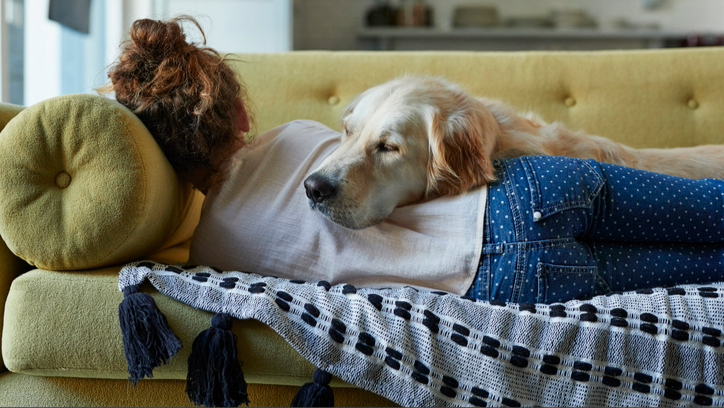
So, by increasing alpha wave activity in the brain and subtly shifting your brainwaves towards slower frequencies associated with drowsiness and sleep, binaural beats could be the perfect gateway into napping.
Essentially, binaural beats are believed to reduce mental stimulation and guide your brain towards a deeper level of relaxation. In doing so, they prompt a faster sleep onset and enhance the quality of your nap by inducing deeper sleep in a shorter time frame.
Can binaural beats ease anxiety and stress?
When experiencing stress and anxiety during sleep, high frequency beta waves, associated with alertness, active thinking and nervousness are the most active brain waves. Unsurprisingly, anxiety and stress are among the biggest disruptors of sleep. However, binaural beats may be able to help here, too.
A meta study of research into the effects of binaural beats on anxiety and depression noted that, overall, studies have shown they have a positive impact when it came to alleviating symptoms of these conditions (though they noted that different lower frequency waves had been used in various studies).
Another study comparing ASMR and binaural beats saw the participants testing "an 8 Hz binaural beat for daytime and a 5 Hz binaural beat for nighttime." The study found both to be effective at stress reduction and saw improvements in sleep latency, total sleep time, time in bed for both, as well and sleep efficiency for the group who tested the effects of binaural beats.
The most popular binaural beats on Spotify and YouTube
From 'Delta Healing' tracks to 'Happy Lucid Dreams' tones, there is an expansive library of binaural beat tracks to chose from on both Spotify and YouTube. Here are our top picks on Spotify:
- Delta Healing by Binaural Beats Sleep
- Binaural Beats (Deep Sleep) by Binaural Beats Sleep
- Happy Lucid Dreams by Deep Sleep Music Collective
- Sleep Meditation by Deep Sleep Music Collective
- Isochronic Tones by Binaural Beats Sleep
And YouTube:
- Sleep Hypnosis by 3AM Relaxation
- The Deepest Healing Sleep by SleepTube
- Emotional Detox by The Lucid Mystic's Sleep Music
- Winter Aurora by SleepTube
- Angelic Manifestation by Aparmita
Top 3 binaural beat alternatives to help you nap
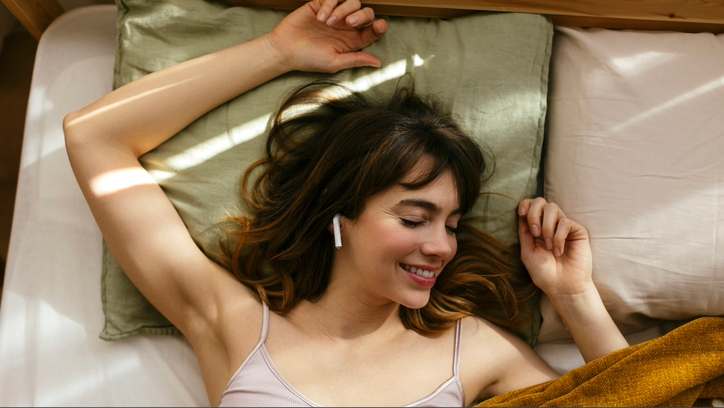
Body scan meditation
A body scan meditation is a practice that can help you fall asleep by increasing your awareness of your body, the physical sensations it is experiencing and helping you relax.
During this type of meditation you typically start by noticing sensations at the top of your head and gradually move down your body, bringing your attention to each part. In a guided body scan, you might be encouraged to consciously releasing any tension you feel, something you can also do if you're practicing this method alone.
You can practice this independently or listen to guided body scan meditations on YouTube.
Cognitive shuffling
Cognitive shuffling is a sleep technique that involves visualizing seemingly random objects to deliberately scramble your thoughts, with the intention of distracting you from worries and helping you fall asleep.
Developed by a Canadian scientist, the idea is that your brain will stop trying to make any sense of the random thoughts, and effectively ‘switch off.’
The Navy Sleep Method
Both the Navy Sleep Method and the Military Sleep Method are recommended by experts, with the latter claiming to help you fall asleep in two minutes and the former designed for short, restorative naps.
The Navy sleep technique involves laying on the floor with your legs elevated and is designed for you to wake up after about 10 minutes. So, if you need a brief snooze it's ideal.
The Military Sleep Method, meanwhile, is a longer process that involves relaxing your muscles, breathing techniques and imagined scenarios. However, when we tested the method over three months, we found it helped us fall asleep within minutes by the second month. Of course, you can also use this method for a nap, as long as you set an alarm!
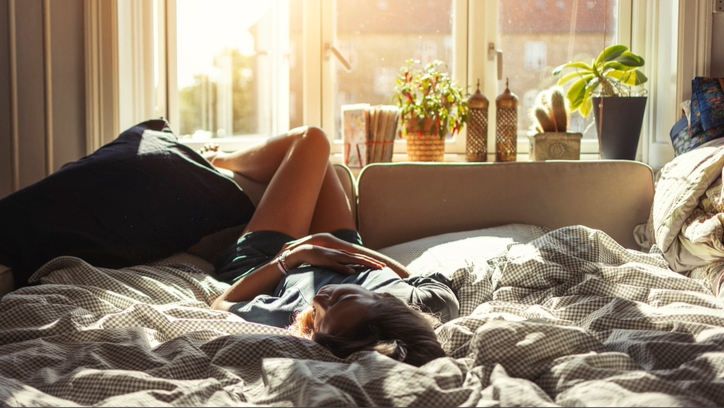
How to create the perfect power nap
Before turning on the binaural beats, you'll need a sleep space that is conducive to daytime power napping. We recommend setting up with a bed for your body type, sleep style and sleep needs by selecting one of this year's best mattresses, as well as investing in the best bedding for ultimate comfort.
Nap timing is also crucial. You don't want to sleep for too long or too close to bedtime to ruin your overnight sleep.
We define a power nap as anything between 20 to 30 minutes, which is enough time to give you a boost in energy without keeping you up at night. But, if you're especially tired, a full 90-minute nap (which constitutes the length of a full sleep cycle in the average healthy adult) might be a better option. Either way, we recommend taking a nap in the early afternoon so as to avoid disrupting your main sleep.
You'll also need to think about lighting and sound. Black out blinds are a great option if you nap regularly during the day (light is one of the main wake up cues, after all), while you might want to invest in noise cancelling ear plugs to ensure your snooze is uninterrupted. Just don't forget to have your alarm volume turned up!

Eve is a sleep tech product tester and writer at Tom's Guide, covering everything from smart beds and sleep trackers, to sleep earbuds and sunrise alarm clocks. Eve is a PPA-accredited journalist with an MA in Magazine Journalism, and has four years’ experience writing features and news. In her role as Sleep Tech Product Tester and Writer for Tom's Guide, Eve is constantly trying out and reviewing the latest sleep products from brands such as Apple, Garmin, Whoop, Hatch, Sleep Number, Eight Sleep, and Oura. A fitness enthusiast who completed the London Marathon earlier this year, Eve loves exploring the relationship between good sleep, overall health, and physical performance, and how great sleep tech can make that relationship even better.
